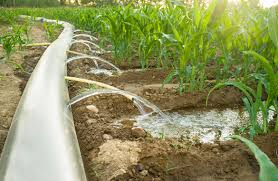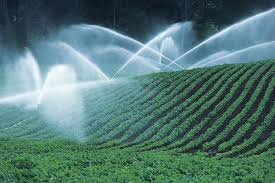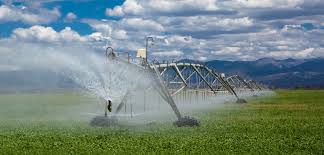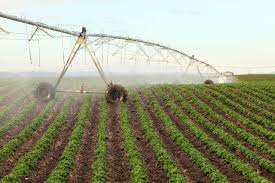Irrigation systems play a pivotal role in agriculture, supporting global food production by ensuring consistent water supply to crops. These systems have evolved over millennia, adapting to technological advancements and environmental challenges. Their significance extends beyond agriculture, influencing water conservation, urban landscaping, and even industrial operations.
Understanding Irrigation Systems

Irrigation is the artificial application of water to land or soil to assist in the growth of agricultural crops, maintenance of landscapes, or re-vegetation of disturbed soils. It compensates for the lack of rainfall in arid and semi-arid regions or supports crops in areas with irregular precipitation patterns.
Historical Development of Irrigation Systems
The history of irrigation dates back to ancient civilizations. Early methods, such as the use of canals and water wheels, were prominent in Mesopotamia, Egypt, and the Indus Valley. These early systems relied on manual labor and simple technology, yet they supported the growth of complex societies.
The Industrial Revolution brought significant changes, introducing pumps and mechanical systems to enhance efficiency. Today, modern irrigation systems integrate advanced technologies, such as sensors and automated controls, ensuring precise water application.
Types of Irrigation Systems
Different types of irrigation systems cater to various agricultural and environmental needs. Each system has unique advantages and challenges, depending on the terrain, crop type, and water availability.
- Surface Irrigation
Surface irrigation involves distributing water over the soil surface. It includes methods such as flood and furrow irrigation. Although it is cost-effective and simple, this system can lead to water wastage and soil erosion if not managed properly. - Drip Irrigation
Drip irrigation delivers water directly to the roots of plants through a network of pipes and emitters. This method minimizes water loss due to evaporation and runoff, making it ideal for arid regions. However, it requires regular maintenance and initial investment in infrastructure. - Sprinkler Irrigation
Sprinkler systems mimic natural rainfall by spraying water over crops using high-pressure sprinklers. This method is suitable for various terrains and crops but can result in water loss due to wind and evaporation. - Subsurface Irrigation
Subsurface irrigation involves applying water below the soil surface, directly to the root zone. This system is highly efficient, reducing evaporation and weed growth. However, it demands precise planning and installation. - Center Pivot Irrigation
Commonly used in large-scale farming, center pivot systems rotate around a central pivot point, irrigating crops in a circular pattern. These systems are efficient but require significant energy to operate.
Benefits of Irrigation Systems

Irrigation systems offer numerous benefits that extend beyond agricultural productivity. They contribute to economic stability, environmental sustainability, and food security.
- Enhanced Crop Yield
Consistent water supply ensures optimal plant growth, increasing crop yields and reducing the risk of failure due to drought. - Efficient Water Use
Modern irrigation systems are designed to minimize water wastage through precise application, conserving this vital resource. - Improved Soil Quality
Irrigation prevents soil degradation caused by wind erosion and supports nutrient distribution within the soil. - Economic Growth
Agricultural productivity fueled by irrigation supports rural economies, creating jobs and boosting income for farmers. - Food Security
Reliable irrigation reduces dependency on rainfall, ensuring stable food production to meet growing global demand.
Challenges Facing Irrigation Systems
Despite their advantages, irrigation systems face several challenges that threaten their efficiency and sustainability.
- Water Scarcity
With increasing competition for water resources, ensuring sufficient supply for irrigation is becoming a critical issue. - High Costs
Modern irrigation systems involve significant initial investment and maintenance costs, which can be prohibitive for small-scale farmers. - Environmental Impact
Improper irrigation practices can lead to waterlogging, salinization, and depletion of water sources, affecting the surrounding ecosystem. - Climate Change
Unpredictable weather patterns and rising temperatures complicate water management, necessitating adaptive irrigation strategies. - Technological Barriers
Access to advanced irrigation technology is limited in many developing regions, hindering agricultural efficiency.
Innovations in Irrigation Systems

Technological advancements are transforming irrigation partaitogel practices, making them more efficient and sustainable. Smart irrigation systems, powered by IoT (Internet of Things) technology, allow farmers to monitor and control water application remotely. Sensors and weather forecasting tools enable precise water management, reducing wastage.
Solar-powered irrigation pumps are gaining popularity, especially in off-grid areas, providing an eco-friendly and cost-effective solution. Additionally, the use of AI (Artificial Intelligence) and machine learning helps optimize irrigation schedules based on crop needs and environmental conditions.
Sustainable Irrigation Practices
Sustainability is a key focus in modern irrigation practices. Farmers and policymakers are adopting measures to balance agricultural productivity with environmental conservation.
- Rainwater Harvesting
Storing rainwater for irrigation reduces dependency on freshwater sources and mitigates the impact of droughts. - Recycled Water Use
Treated wastewater is increasingly being used for irrigation, conserving freshwater for drinking and household purposes. - Soil Moisture Management
Monitoring soil moisture levels helps determine the exact amount of water needed, preventing over-irrigation. - Crop Rotation and Selection
Growing drought-resistant crops and rotating plant types improves water use efficiency and soil health.
The Future of Irrigation Systems
The future of irrigation systems lies in the integration of technology, sustainability, and policy innovation. Governments and organizations must invest in research and infrastructure to ensure equitable access to advanced irrigation technologies. Public awareness campaigns and training programs can empower farmers to adopt efficient practices.
As the global population continues to rise, the demand for food and water will intensify. Efficient and sustainable irrigation systems will play a critical role in meeting these challenges, ensuring a balanced coexistence between agricultural productivity and environmental health.
Conclusion
Irrigation systems are indispensable in modern agriculture, enabling farmers to overcome the challenges of climate variability and water scarcity. By embracing technological innovations and sustainable practices, these systems can continue to support global food security while conserving natural resources. The journey towards efficient irrigation is ongoing, requiring collective efforts from farmers, researchers, and policymakers to achieve long-term success.




